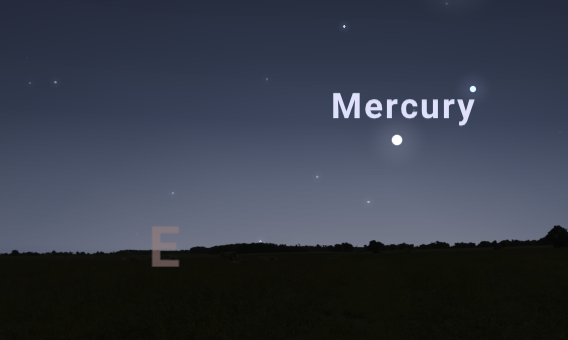In astronomy, a planet’s elongation is the angular separation between the Sun and the planet, with Earth as the reference point. The greatest elongation of a given inferior planet occurs when this planet’s position, in its orbital path around the Sun, is at tangent to the observer on Earth. This makes viewing these events not much of a challenge. When a planet is at its greatest elongation, it appears farthest from the Sun as viewed from Earth, so its apparition is also best at that point.
There is an alternative definition of the term elongation, which would refer to the angular distance of a moon of another planet from its central planet. An example of this reference is regarding the instance of the angular distance of the moon Io from Jupiter. There is a special case of the moons of Uranus because of the planets axis of rotation. Due to the planets high inclination of axial rotation, the moons of Uranus will be at a greatest northern and greatest southern elongation.
Greatest elongations of a planet happen periodically, with a greatest eastern elongation followed by a greatest western elongation, and vice versa. The period depends on the relative angular velocity of Earth and the planet, as seen from the Sun. The time it takes to complete this period is the synodic periodof the planet.
Inferior planets, otherwise known as Mercury and Venus, are near their greatest eastern elongation when they are visible after sunset. However, when these planets are visible before sunrise, it is said to be near its greatest western elongation. The angle of the maximum elongation (east or west) for Mercury is between 18° and 28°, while that for Venus is between 45° and 47°. These values vary because the planetary orbits are elliptical rather than perfectly circular.
Objects such as superior planets, dwarf planets and asteroids undergo different cycles. After conjunction, such an object’s elongation continues to increase until it approaches a maximum value larger than 90°, which is impossible with inferior planets and can typically very near 180°. These are known as opposition and corresponds to a heliocentric conjunction with Earth.
In these instances, when seen by an observer on the superior planet at opposition, the Earth appears at conjunction with the Sun. Technically, the exact moment of opposition is slightly different from the moment of maximum elongation.
There are plenty of astronomical websites, such as Heavens-Above, that have tables and provide forecasts of when and where the planets reach their next maximum elongations.

Be the first to comment on "Elongation: An Introduction"